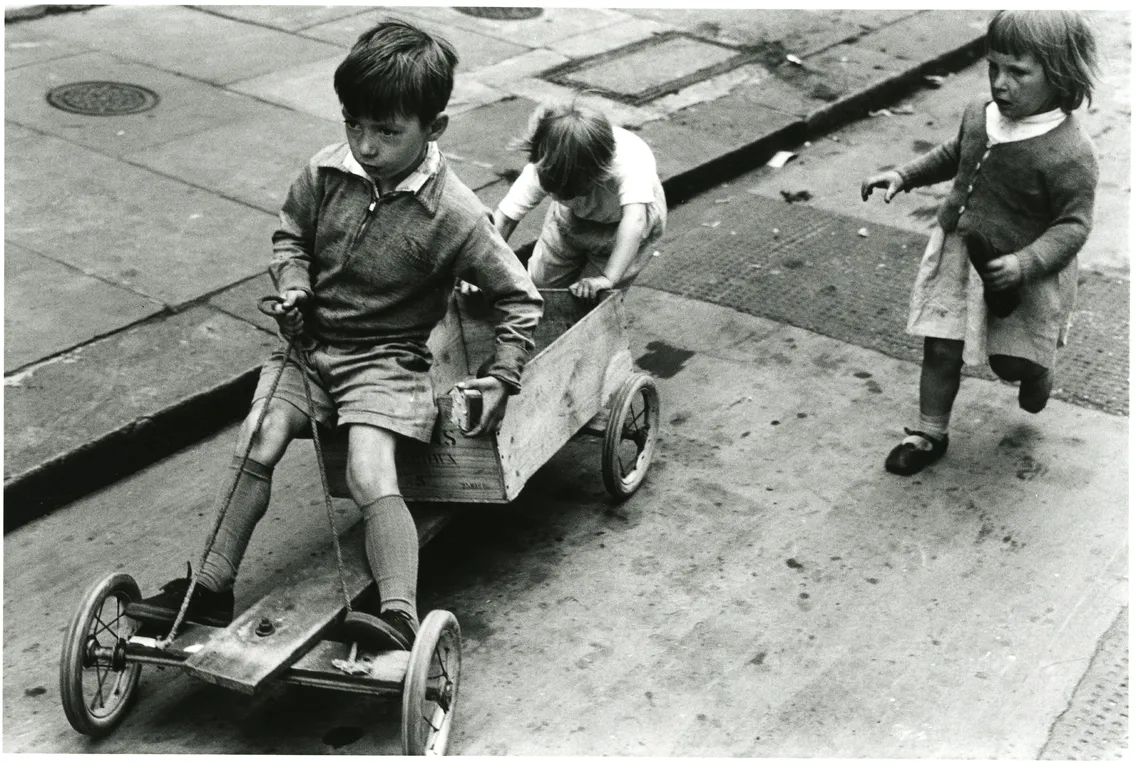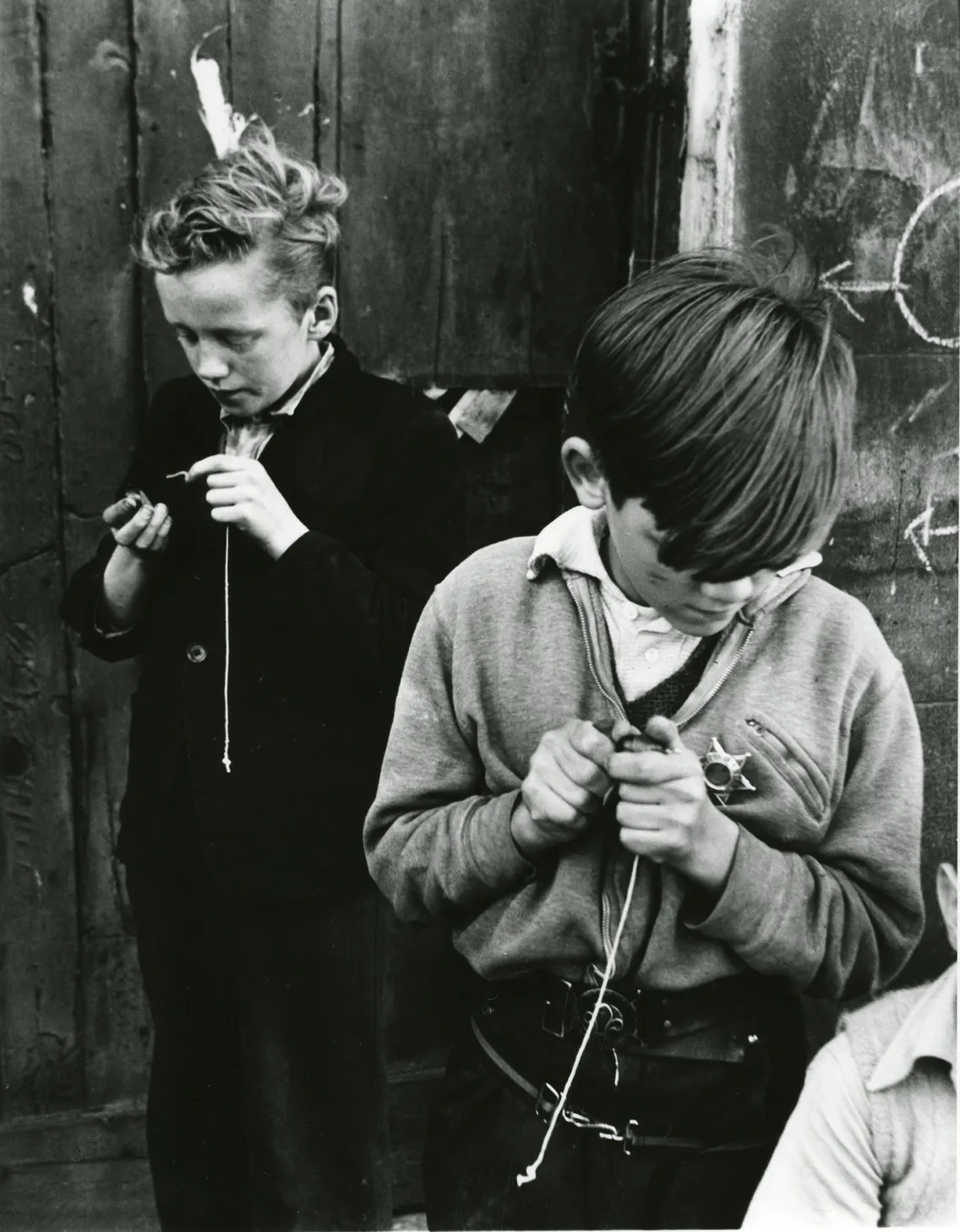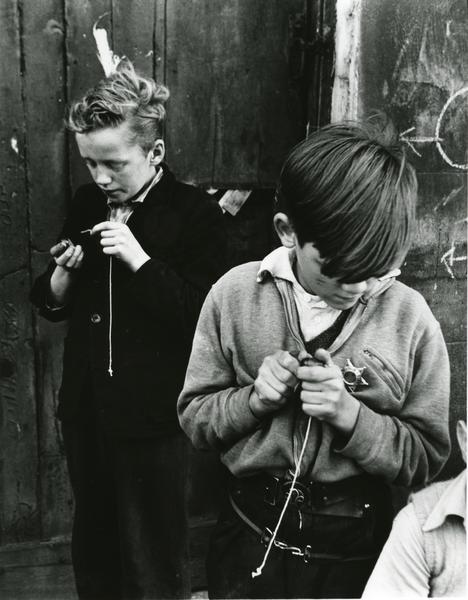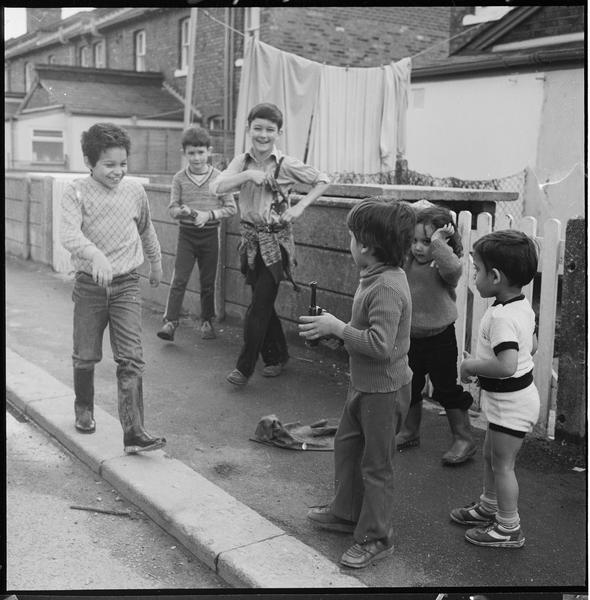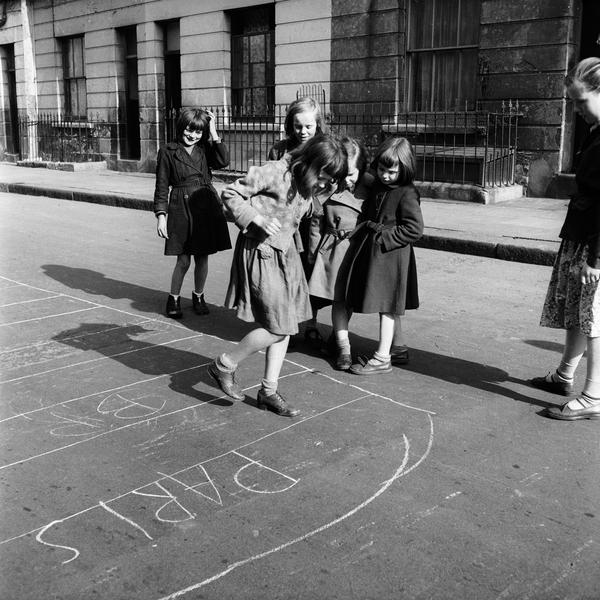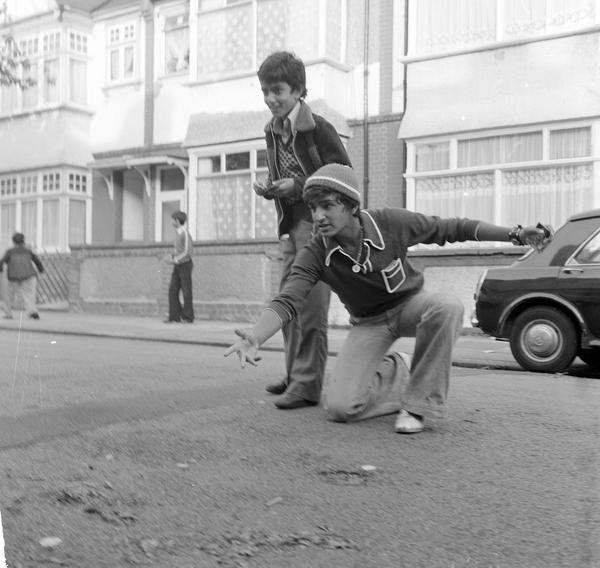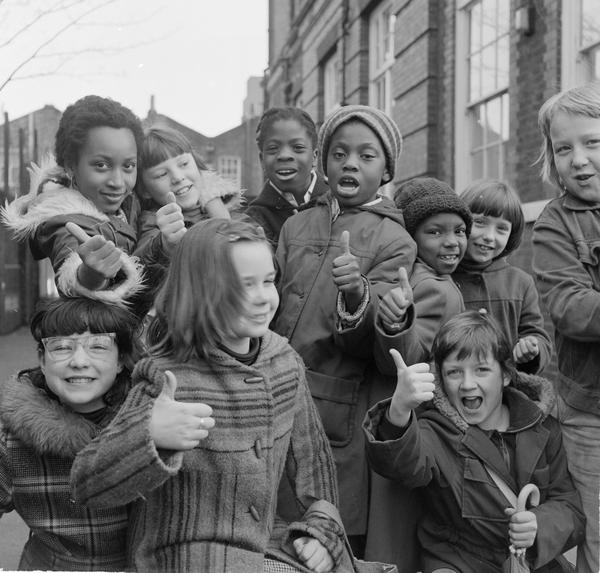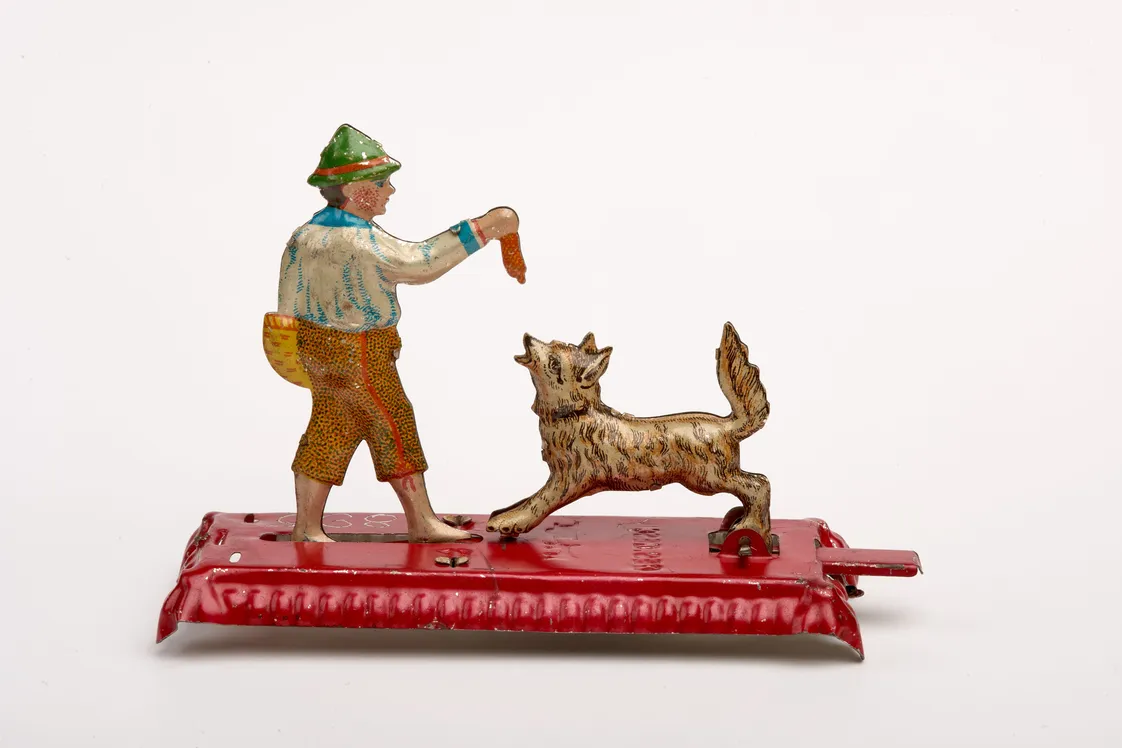How street play shaped the lives of London’s children
The street: where friendships are formed, games are played and imaginative worlds are created. For many of us raised in the capital, childhood memories were made in our neighbourhood outdoors.
1900s
A playground just beyond the front door
Before our lifestyles became more mobile, young Londoners’ lives were centred on their local community. Living in cramped neighbourhoods with a lack of inner city playgrounds, the street offered an open urban space in which to play.
Our oral history and historical photographs collections show how London’s children have imaginatively played in their streets. We don’t see it as much nowadays. But street play – building toys, trading cards, hanging out – was once an important part of childhood in the capital.
Friendships formed on street corners
An important part of street life was being part of a group. In one oral history interview, Betty Phillips (born 1923) had a “really good gang of kids” she played with in the streets of St John’s Wood in the 1930s. She explained that “we might have had a tumble or two but I can never remember any rows or fights.”
“I still puzzle how the heck we managed to do it, but there were seasons for games”
Betty Phillips
Part of the joy of street play was that it wasn’t scheduled or organised by adults. Children were free to choose what they wanted to do. Boys and girls would mix together and different games would come and go in seasons.
Phillips recalls: “I still puzzle how the heck we managed to do it, but there were seasons for games, nobody put a notice up, nobody said ‘today we play marbles, tomorrow we play diabolo, tomorrow we play whip and top’, it just automatically followed.”
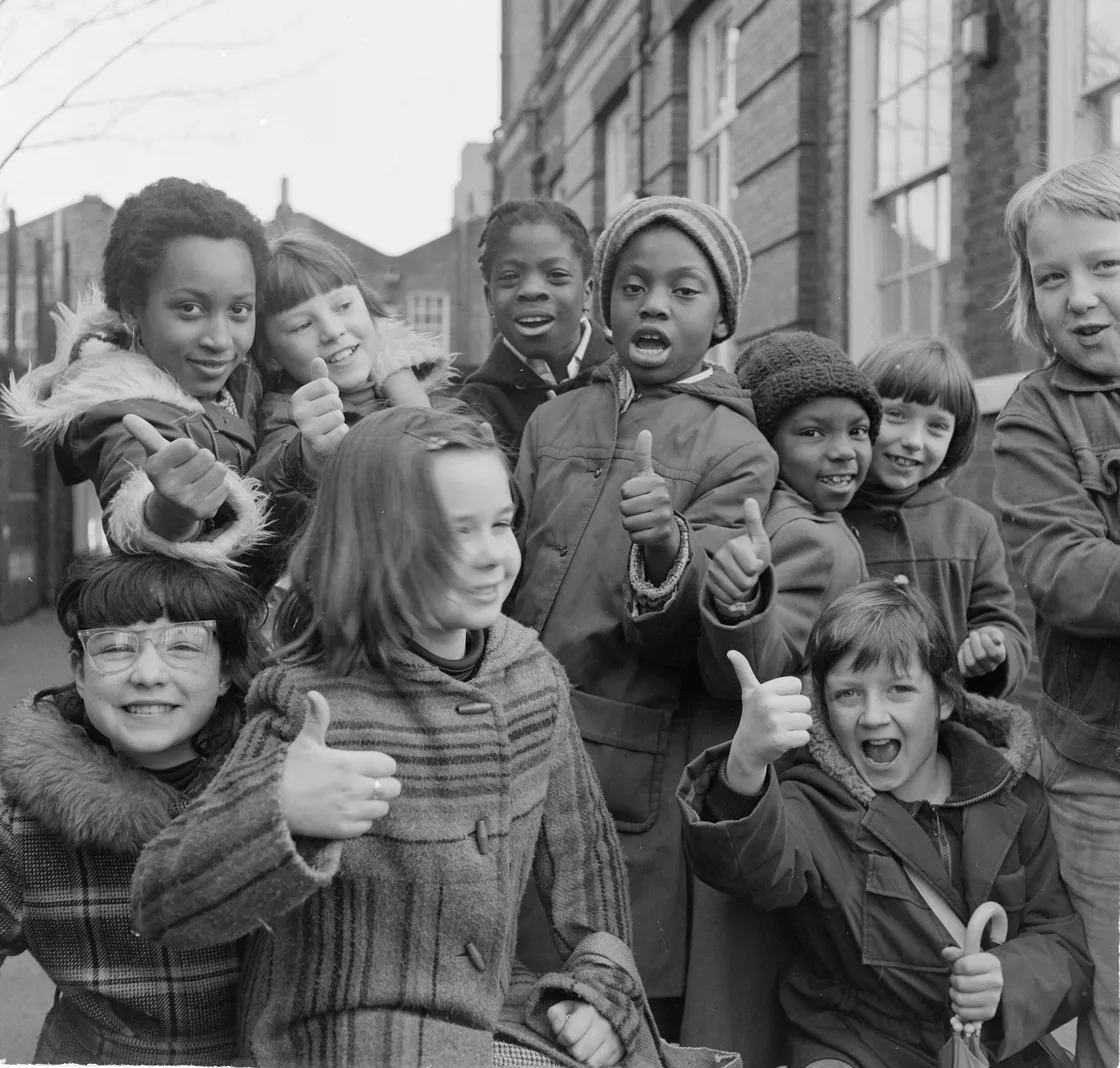
Henry Grant snaps children playing in the street in 1972.
Norman Douglas’ London Street Games
In the early 1900s, author Norman Douglas asked children playing on London’s streets to write down the play-rules of their games. The result was London Street Games (1916), a book listing 950 different games, verses and songs. It's a tribute to the imagination of London’s children who made up so many ways to entertain themselves – with very few resources.
Some children had toys such as skipping ropes, marbles, bats and balls. But many had to invent games with whatever items were to hand. Cherry pips, caps, boots, buttons, stones and lengths of rope were all temporarily turned into playthings. They were then discarded or returned to their original use. In London Street Games, Douglas lists 30 different games that could be played with a boy’s cap alone.
Trading cards and children’s collectables
Children love to collect things, swap things and play games to win things from other children’s collections. It didn’t take long after cigarette cards were first produced in 1887 for children to realise that they were a collectible commodity. Children would ask adults for the cards from their cigarette packets.
Frank Hughes (born 1902) remembers playing flick cards with friends in Wimbledon in 1913. The game involved “flipping [cards] up against a wall and the nearest one would win the cigarette cards”.
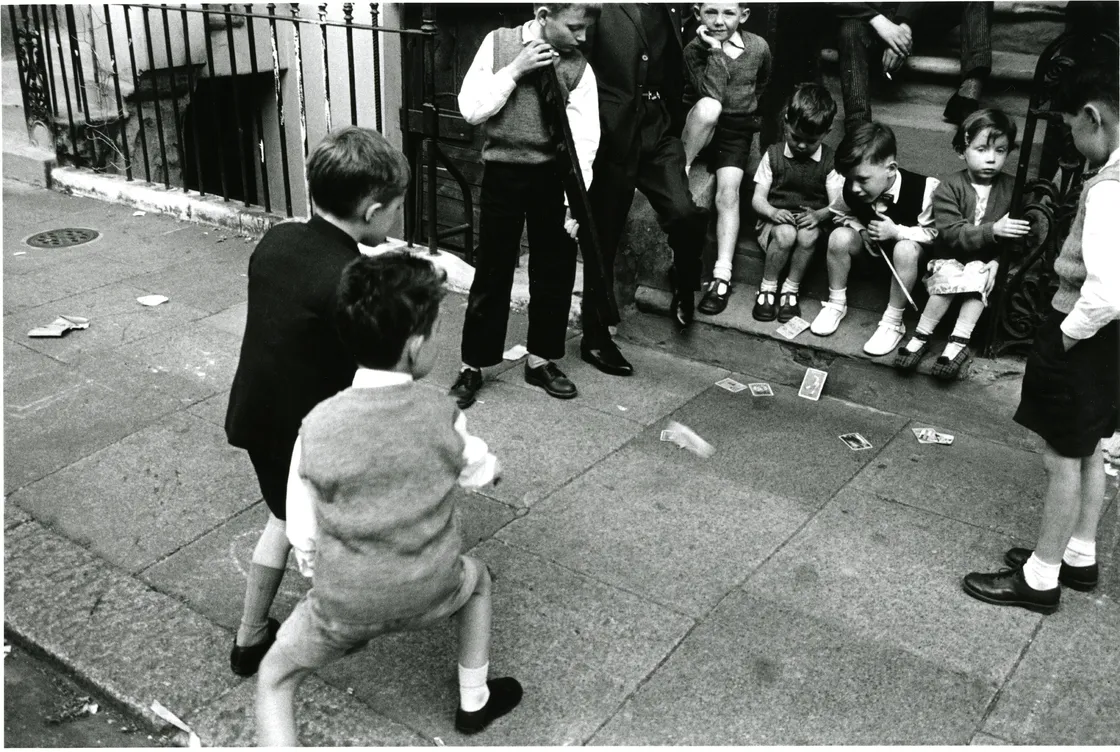
Playing with cards on a pavement in North Kensington.
Cigarette cards reached their peak of popularity in the 1930s. However, in 1939 paper shortages halted their widespread production. After the Second World War, tea cards took over. And in the 1990s, trading card games like Pokémon were introduced. They remain hugely popular with children today.
Build-your-own scooters and go-carts
With many families unable to afford commercially manufactured toys, children would make their own. In the 1930s, many London children constructed their own wooden scooters and go-carts. Unfortunately, these kinds of objects rarely survive to be acquired into museum collections.
John Chaplin (born 1923) played on the streets of Lambeth in the 1930s and remembers everyone would make scooters. He would search the streets with his friends for scrap wood and ask at garages for old ball bearings that would be used as wheels. Chaplin recalls “the noise from these scooters going across the pavement… there was a right dreadful row from these things”.

Go-karting over west London cobblestones.
Street play in London today
Today, 80 percent of public space in London is made up of streets. But little of it is accessible to the city’s children.
As more families owned cars after the Second World War, residential streets became full with traffic. Cars don’t just take up children’s potential playspace – they also pose obvious safety hazards. Complaints about anti-social behaviour from neighbours have also contributed to the disappearance of children from London’s streetscape.

A designated 'play street' in 1956.
Charities like London Play have worked to bring children back out into London’s streets. They support residents to set up regular street play sessions in their street through the local council. Many London Borough councils have now simplified the process involved for residents to apply for a free Temporary Play Street Order. This allows them to close off their street for regular play sessions.
Writing/researching credit: Natasha Fenner

